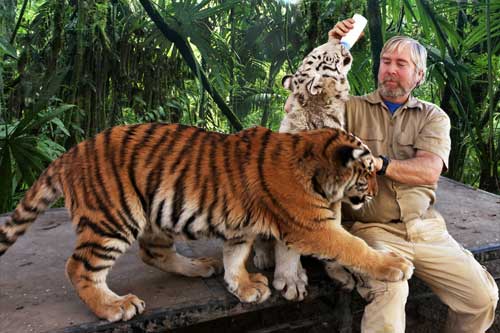How do we do
it?
Traveling through the blistering heat of
deserts, climbing up old fort walls and going to places that few
other outsiders have seen before are some of the interesting
places we are happy to take you! Hauling this very specialized
equipment around on the backs of camels, elephants and a wide
assortment of old vehicles to explore vast areas is not always
easy, but that's what makes it more interesting!
Here are some of the
ways.
Using a 17 foot telescoping pole with a
DSLR camera mounted on its top. This setup can be stuck out
windows from high above the ground, put under and over things,
flipped upside down for shots a few inches off the ground, just
to name a few of the ways we use it. There's also an assortment
of other equipment that all has to be light weight and
portable.
We specialize
in:
Fast action shots, remote locations,
virtual reality tours of cities, monuments, forts, temples and
palaces. Working with and around large animals, along with
shooting some of the worlds largest animal events.

Main Equipment:
Canon 5D mark II cameras with Nikkor 10.5mm
f/2.8 lenses, Custom made pano heads, 4 to 17 foot telescoping
K-tek pole and wireless remotes. This is just a fraction of the
equipment it takes to bring you the highest quality views along
with the excellence audio that goes along with them.
Programs used to make tours:
PTGui image stitching
software for stitching photographs into a 360-degree panoramic
image.
Pano2QTVR allows you to create cylindrical and
cubic panoramas.
FPP Flash Panorama Player is a new panoramic
viewer.
Adobe Photoshop CS4 digital image editing
software.
Below is a photo showing some of the custom equipment used for
doing this type of work. A special tripod setup is used were the
pano head mounts with a brass pin to rotate. This setup makes for
a very small footprint! The brass pin has 3/8 threads so that it
can easily be removed and replaced with the pole.
The next one over shows the 17 foot telescoping pole setup using
a RF remote shutter release, a small plastic clamp holds the
camera strap out of the way.
The last one over shows how it can be done hand held (camera
stands are not allowed in many places). A small thread about 4 or
5 feet long with a small weight on the end and a bullseye level
on the camera. The thread can be rolled up around the lens when
done, and by putting the lens cap on it's held in place.
 Email @IndiaVRtours.com
Email @IndiaVRtours.com